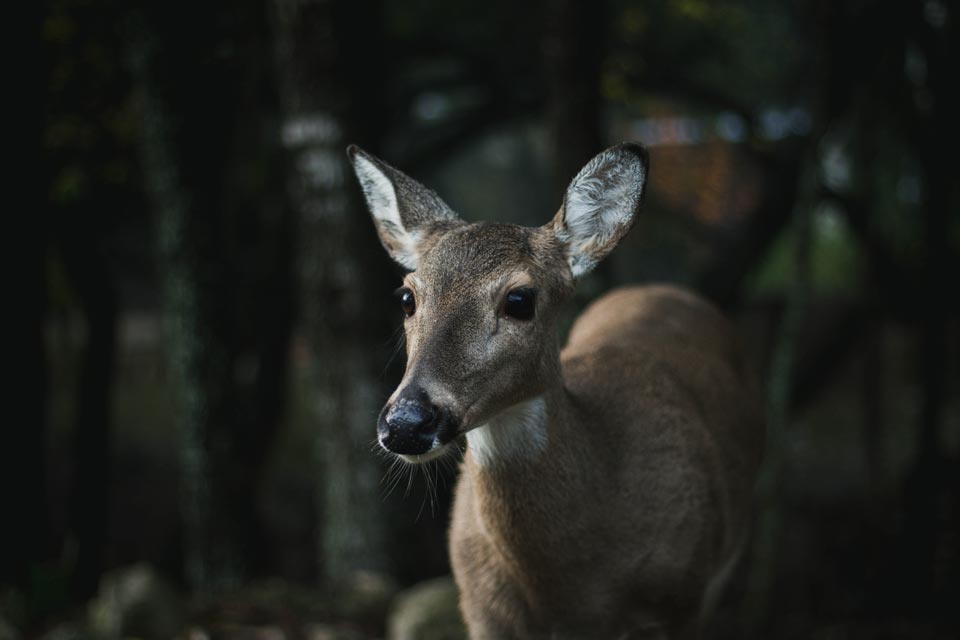It was all over the news for days. A late season Nor’easter was forming and headed our way. Folks from Maryland to Maine made their pilgrimage to grocery stores to collect storm essentials, bread and milk. I grew up in New England (my parents reported 20” of snow from this storm in northern VT) so the bread and milk thing escapes me. I guess it’s just one of those traditions…
Over a foot of snow was predicted to cover our study areas. I was at home ready with my bread and milk but what about deer? Did their movements change with eminent doom hanging in the air? Did they sense it and move more before the storm? What about after?
These are questions we can actually answer! We had 21 does collared during the storm. Collars were collecting locations every hour (these are the VIT doe collars – other collars only get a location every 7 hours this time of year).
Looking at the locations, I calculated the median distance moved every hour of the day for the following time periods (I used the median distance because the median is less affected by extreme movements by a few deer):
- The 6-day period of 7-12 March,
- Monday, March 13 – the day before the blizzard hit (the storm arrived late Monday night),
- Tuesday and Wednesday, March 14-15 when the blizzard arrived and the following day, and
- Thursday and Friday, March 16-17.
Here’s a graph of deer movements during 7-12 March (note: times are not corrected for Daylight Savings Time)
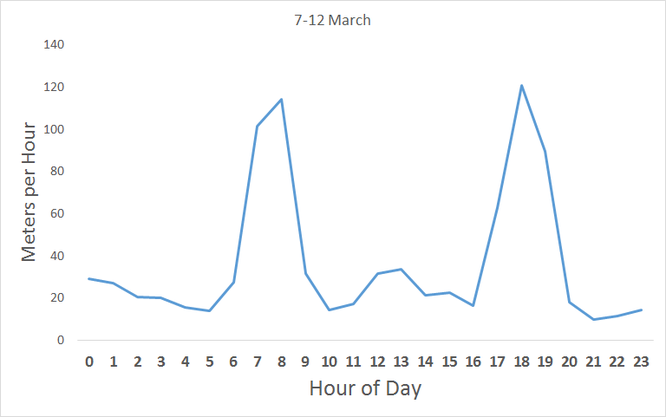
Pretty typical movements for deer with activity peaks in the morning and evening.
The day prior to the storm (Monday, March 13), I was riding to work listening to the weather: a storm watch, then a storm warning, and then warnings of up to 15” of snow. All while the sun shined on a calm day, not a hint of the snow dump.
Does our favorite cervid have a sixth sense? Did they know the sunshine was a red herring? If so, how would they react? Here are their movements on Monday in comparison to the average of the previous 6 days.
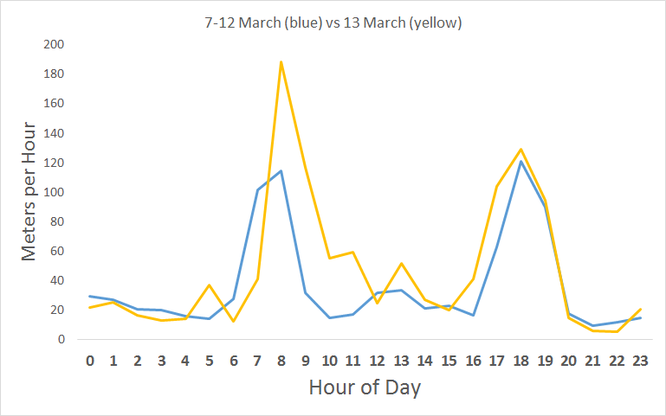
There does appear to be more movement that day, at least in the morning. But I need to point out some things before you draw any conclusions from this graph.
- The blue line represents a pooling of data over 6 days – the yellow line represents data from just the day before the storm, which means that there will be more variability in the data represented by the yellow line.
- The larger values at 8am-10am are because a single deer decided to make some really large movements. Most deer during that time were not much different than the blue line.
To conclude that deer can sense a storm is coming and adjust their activity we will need more deer collared or more blizzard events. We can’t do much about the latter.
Deer won’t be getting any offers from The Weather Channel for their winter storm predictive abilities (Personally, I’m pretty skeptical as well). But what about during the storm? Were they the Jim Cantore of the woods standing out there in the sideways snow going about their business? Or did they wait it out content to let some other critter get all the air time?
Below is a graph of movements the day of the storm and the day after (March 14-15).
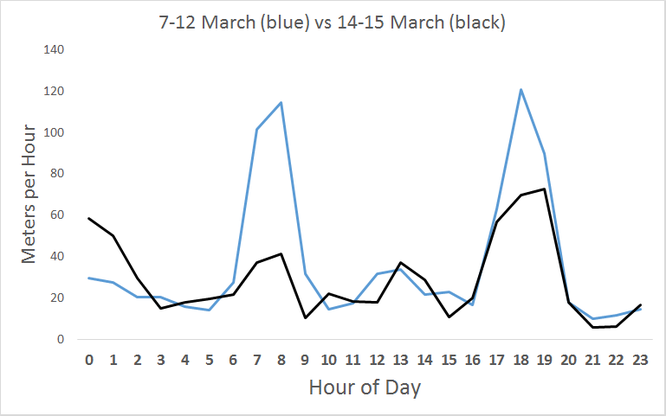
Deer definitely reduced their movements, especially in the morning (the differences at 7-8am are statistically significant). There is greater activity that evening, but it is still reduced from their typical movements. A snow day for sure.
How long did it take for them to shovel out and go back to work (so to speak)? The storm was a bit of a bust – our study areas on the Susquehannock State Forest only got about 8” of snow, the Rothrock and Bald Eagle state forests got 9-13” in places. Snow wasn’t measured in feet but check out deer movements March 16-17, two days after the storm.
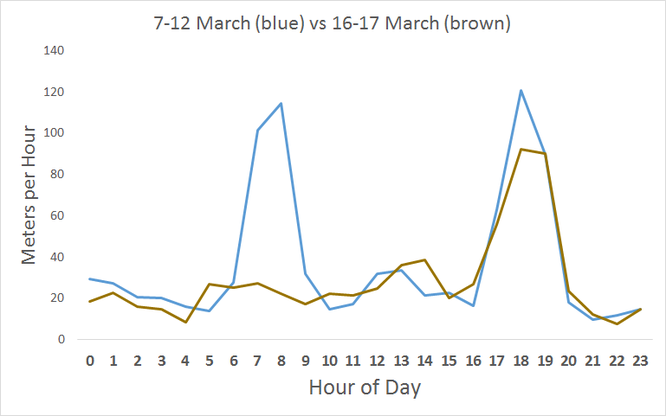
Not what I expected at all! Our deer slept in and let someone else do the shoveling – skipping their morning travels all together, only heading out for an evening run. Perhaps with the increased snow depths, it was more energy-smart to only move once a day to feed!
But then I was discussing these results over dinner with my wife, Lisa, and she made an observation that all made sense. It’s March and during the day it gets above freezing but at night it freezes. What does that do to the snow? It makes it very difficult for deer to walk.
Eight inches of powder? No problem. But have you ever walked in 8″ of snow that has repeatedly frozen and thawed? Take a step, snow holds your weight so you have to heave yourself up, but then the snow collapses under your weight when you’re only halfway up… repeat as you walk. The energy expenditure for this type of walking is tremendous.
My explanation (with Lisa’s help!) of why deer avoided morning movements is that the deer avoided traveling when the snow was frozen and waited until afternoon when it softened up and was easier to walk.
So this blizzard makes it looks like The Weather Channel and its team of meteorologists will be keeping their jobs. There isn’t much evidence here that deer can predict the onset of a storm. More data are needed, of course, before we can come to any firm conclusions.
But I don’t expect any more storms where we can collect data this year! The vernal equinox was today (March 20), which means plenty of bread and milk at the store for a while.
-Duane Diefenbach
If you would like to receive email alerts of new blog posts, subscribe here.
And Follow us on Twitter @WTDresearch
